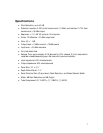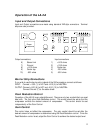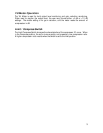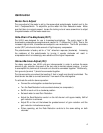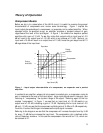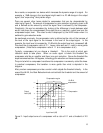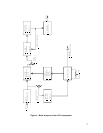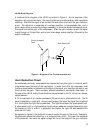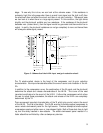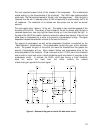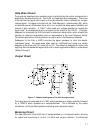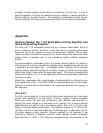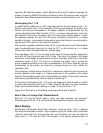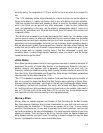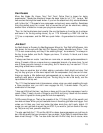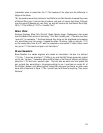
9
stage. To see why this is true, we can look at the extreme cases. If the resistance is
extremely high (this is the case when there is a small input signal and the light is off) then
the photo-cell does not affect the circuit and there is no gain reduction. The second case
we can look at is when there is a large signal present. In this condition, the light shines
brightly and the photo-cell exhibits very low resistance. If the resistance of the photo-cell
becomes zero (a dead short), then the signal would be grounded and there would be no
output. In reality, the photo-cell resistance can not go completely to zero and hence there
will always be some signal present.
7
R5
68K
R6
68K
R7
2.7K
8
9
10
TO VO LTA G E
A M P L IF IE R
TO G A IN
REDUCTIO N
CO NTROL
TO ATTEN U A TO R
D R IV E A M P L IF IE R
GAIN R1
100K
PHOTOCONDUCTIVE C ELL
ELEC TRO LU M IN ESC EN T
ELEM EN T
H A-100X
.0047 uF
Figure 5 - Schematic of the LA-2A input and gain reduction circuit.
The T4 electro-optical device is the heart of the compressor and its gain reduction
characteristics. Its unique characteristics affect the overall sound and character of the LA-
2A.
In addition to the compression curve, the combination of the EL panel and the photo-cell
determine the attack and release characteristics of the LA-2A. This is one of the most
important contributors to the sound of the LA-2A. Unlike other compressors which allow
the user to adjust these parameters, the attack and release of the LA-2A are completely
determined by the T4.
There are several important characteristics of the T4 which play crucial roles in the sound
of the LA-2A. The first is the attack. The LA-2A was the first electro-optical compressor to
use an electro-luminescent panel for the light source. Previous attempts at electro-optical
compression employed either neon or incandescent lights. Both of these took time to light
up, and this delay resulted in slow attacks. The electro-luminescent panel resulted in a
faster attack than exhibited by other contemporary devices.



